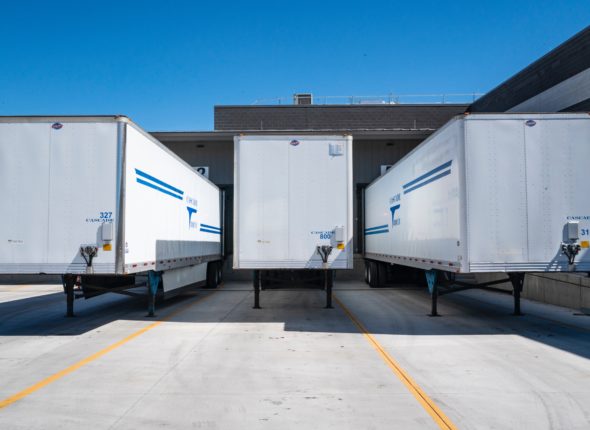Pharma logistics is currently facing many challenges, but there are also a multitude of new opportunities. Globalization is now followed by digitalization: AI, data science, blockchain, machine learning, collaboration platforms and IoT are opening up new ways of looking at things – with significant business impact. The upheaval in supply chains due to the Covid-19 pandemic and various climate disasters throughout the world have made supply chain resilience a pressing issue. In parallel, sustainability is emerging as a hot topic on the pharma logistics agenda and data analytics is more and more becoming “touchable” and value adding for supply chain execution.
Part I: New Market Opportunities Drive the Need for Change in Pharma Logistics
In this first part of our series, we highlight some of the key trends in pharma that drive tomorrow’s pharma logistics.
Adapting Supply Chain Execution to Match Rapid Changes
Pharma operations executives know that globalization still involves major challenges. Growing international trade still enlarges supply chains of global manufacturing networks and sourcing markets. This exposes the supply chain increasingly more to disruptions and risks caused by e.g., a pandemic, extreme weather conditions, natural disasters, closed borders, new customs procedures, blocked waterways, and harbors. Combined with continuously growing regulatory requirements in pharma logistics like e.g., the recent need for a safety stock increase in France, we are forced to increase flexibility, mitigate risks, maintain control, and monitor not only the journey of our products but also the temperature and humidity conditions. However, if we succeed in adapting the supply chain organization to an increasing speed of change, great opportunities will open up as well. Flexibility in distribution to the same customer out of multiple sites, late postponement, capturing new markets like Middle East & Africa or capitalizing on the opportunities of the growing market for advanced and personalized medicine are just a few examples.
M&As: Impact and Opportunities for Pharma Logistics
In recent years, especially two trends have had tremendous impact on the pharma supply chain: mergers and acquisitions (M&A) and – often related to this – a portfolio enlargement towards large molecular pharmaceuticals (biotech). Such changes imply a significant effort when it comes to adapting processes and IT systems and ensuring information can flow and regulatory requirements are met. This also includes the consolidation of distribution networks, as well as integrating or harmonizing product safety and temperature monitoring or the need to service out of one network the distinct requirements of biotech, pharma and vaccines – to name just a few.
Merged businesses can of course achieve significant savings by reviewing their distribution network, uncovering inefficiencies due to duplicated logistics processes and systems as well as lacking process standardization, master data management and supply chain planning. If new products with different sensitivities are added to the portfolio, supply chain planning needs to be reviewed. Higher sensitivities can lead to shorter expiration times requiring shorter lead times and increased temperature control efforts.
Product Sensitivity Driving Regulatory Requirements and Packaging Solutions
Temperature control and monitoring can be a tremendous burden considering regulatory requirements and the many different loading devices that can be used to ensure product safety along the shipping processes, such as active or passive ULD (unit-load-devices) or thermo blankets – all with very different cost and insulation grades and consequently the risk of very costly product losses. Still, you will always find that there are more cost-efficient ways of transport as well as that the safety of your time-sensitive and high-value medication is better protected by a different process or packaging solution. As practitioners in pharma logistics, we just need to sharpen our awareness for these opportunities and continuously create more flexibility in our setups in alignment with our quality teams.
Re-inventing Supply Chain Resilience and Introducing Sustainability
Flexibility and the ability to adapt in short term is also key to supply chain resilience, a concept that has been around for some decades in many other disciplines. What is meant is the ability to quickly react in your setup to e.g. some disruption and then return to the original or even a better state. This not only requires the knowledge about the vulnerability of your operations, but also the capability to reduce the impact of risks. The challenge is that we don’t know how and where the next unexpected development is going to hit us, as these days seem to be an ongoing mix of new crisis topics like the Covid-19 pandemic, Brexit, and environmental evergreens like floods, hurricane or tornado season (now even in Germany), driver shortages, a Suez canal blockage, and others.
As we learned during the recent challenges, we want to avoid making things even worse. After 30 years of green movement, recent development boosted the requirement of “true sustainability”, including CO₂ and waste reductions. This also applies to pharma logistics. The good news is that this often correlates with efforts for cost savings, as mostly the same measures apply.
New Technologies for Pharma Logistics
From a technological point of view, integrated supply chain execution has arrived in pharma logistics with successful implementations of transport management systems across the industry. During the pandemic, collaboration platforms are getting traction in pharma logistics as visibility and real-time temperature tracking requires integrated systems and business intelligence solutions for enhanced reporting and data management. Supported by machine learning, we can now realize predictive analytics even for short team capacity planning and apply this to the struggle of managing our need for e.g., Reefers and ULD like Envirotainers. Soon, much of this technology will have already become part of operational routines.
New Release of SAP
However, the next years will continue to see a much bigger change requiring budgets that go far beyond the testing and application of these technologies: like other industries, pharma is affected by the migration from SAP R3 to S/4, putting many of their customers (big or smaller) under pressure. For example, templated solutions for EWM will need to be developed, piloted and implemented. This is a major challenge throughout the industry. And it can become the perfect opportunity to take the next step and incorporate some tech trends mentioned above in your new process model. Then, companies can benefit from increased process efficiency, reduced cost and CO2 emissions as well as improved supply chain transparency!
In our next blog article, we will give insights into supply chain visibility in pharma logistics with a practical example, the integration of temperature management.
Looking for new insights on pharma logistics? Join the discussion in our Open Space series. Please follow this link to the registration.
We would like to thank Thomas Schnur for his valuable contribution to this article.

